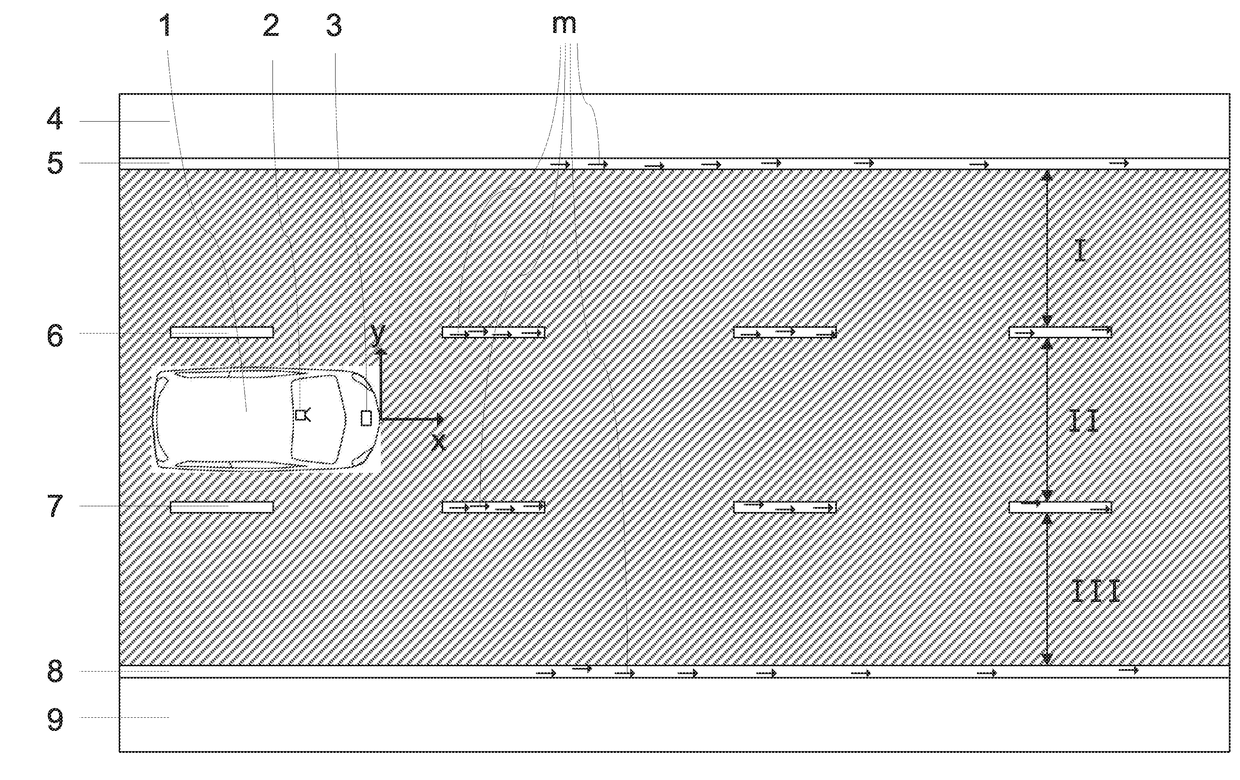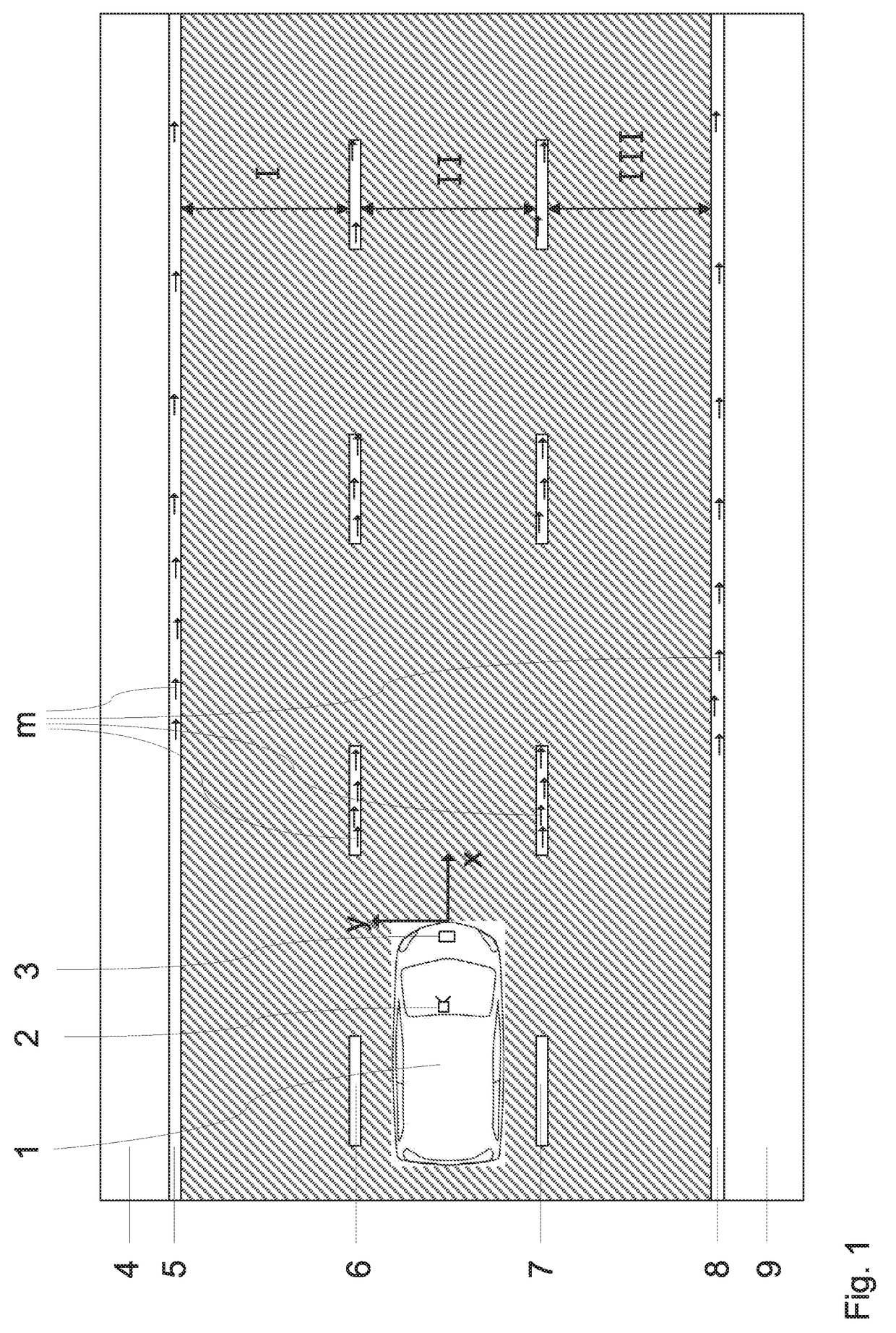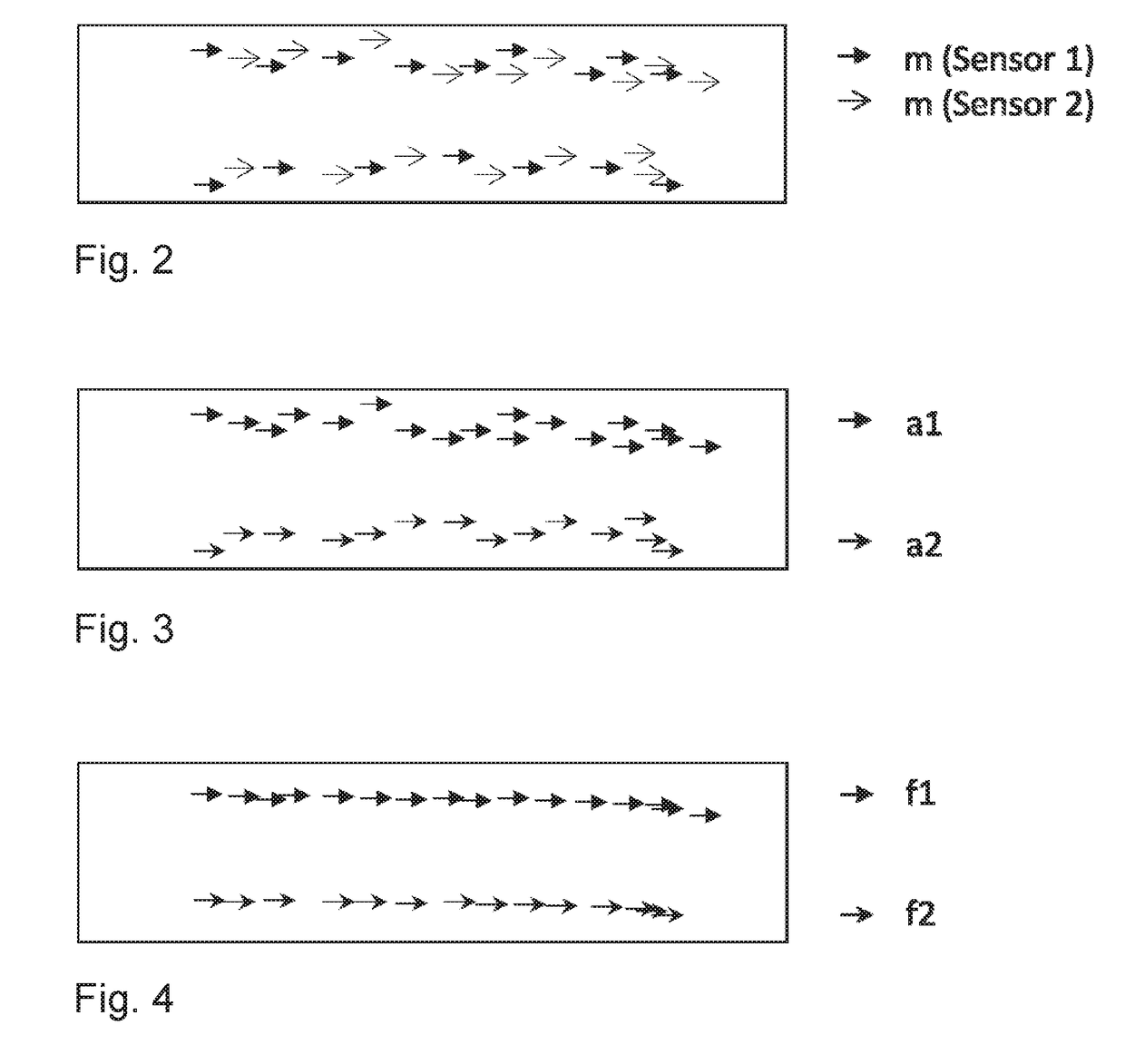Method for estimating traffic lanes
a technology for traffic lanes and lanes, applied in the field of methods for estimating traffic lanes, can solve the problems of geometric model assumptions, inability to ascertain the course of the lanes, etc., and achieve the effect of increasing the detection range and increasing the availability
- Summary
- Abstract
- Description
- Claims
- Application Information
AI Technical Summary
Benefits of technology
Problems solved by technology
Method used
Image
Examples
Embodiment Construction
[0052]FIG. 1 shows a vehicle (1), which is located on the middle (II) of three traffic lanes (I-III). The three traffic lanes (I-III) are separated from one another by dashed traffic lane markings (6; 7) and are each separated from the adjacent area (4; 9) located outside the three-lane road by a continuous traffic lane marking (5; 8) or delimiting line.
[0053]The vehicle (1) has multiple environment capturing sensors, preferably a front camera (2) and a radar sensor (3). The front camera (2) captures images which illustrate the area of the traffic lanes (I-III) located in front of the vehicle (1), inasmuch as the road surface is located in the field of view of the front camera (2) and is not obscured by objects.
[0054]Traffic lane markings (5-8) can be extracted as bright / dark transitions from the image data in the known way. A feature can be indicated as a feature vector m (x, y, heading in vehicle coordinates) on the border of a traffic lane (I-III) or between two traffic lanes.
[00...
PUM
 Login to View More
Login to View More Abstract
Description
Claims
Application Information
 Login to View More
Login to View More - R&D
- Intellectual Property
- Life Sciences
- Materials
- Tech Scout
- Unparalleled Data Quality
- Higher Quality Content
- 60% Fewer Hallucinations
Browse by: Latest US Patents, China's latest patents, Technical Efficacy Thesaurus, Application Domain, Technology Topic, Popular Technical Reports.
© 2025 PatSnap. All rights reserved.Legal|Privacy policy|Modern Slavery Act Transparency Statement|Sitemap|About US| Contact US: help@patsnap.com



